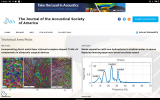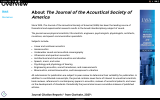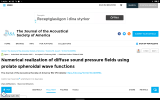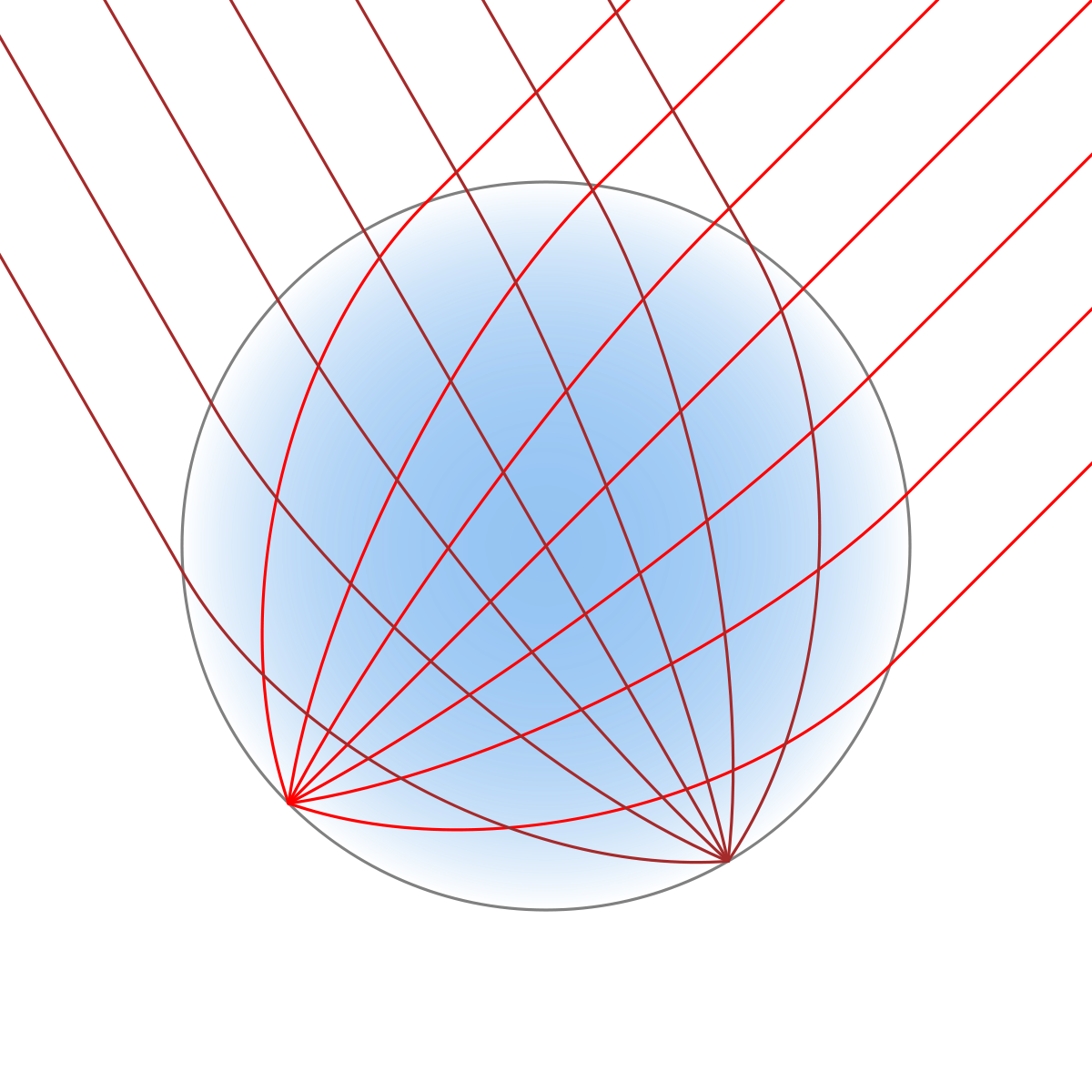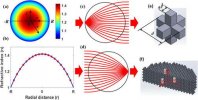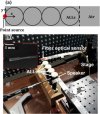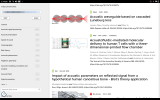Another example. :
Acoustic waveguide based on cascaded Luneburg lens
4. Conclusions
We analytically, numerically, and experimentally demonstrated for the first time that an acoustic waveguide can be achieved by using the cascaded ALLs. The ALL used in the waveguide is based on variation of the filling ratio of lattice unit cells, which renders a graded change of the refractive index along the radial direction. This ALL allows for both acoustic wave focusing and collimation. By taking advantage of the properties of the ALL, an acoustic waveguide was realized based on cascading four ALLs. The ray trajectory method was used to calculate the wave propagation through the acoustic wave waveguide, demonstrating its working principles. Furthermore, numerical simulations were carried out to characterize the performance of the acoustic waveguide, which were validated by the experimental studies. In both the numerical and experimental studies, the cascaded ALL waveguide demonstrated pressure gains of up to 4.1 and 3.2, respectively, compared with the cases without the ALL waveguide. This work provides a new solution for the development of acoustic waveguides.
... and no, do not ask me to explain. I'm not an acoustician. I just posted that link because I like it seems interesting. But as I said, I'm not the right person to decide that if that is the case. A tip for others to read.

Those are researchers in acoustics who have tested and experimented. Apparently with this:

en.wikipedia.org
See attached picture. There are many links.

Edit:
That Journal of the Acoustical Society of America is too technical for me, but there may be others who benefit from it.

Edit 2
But if I got it right, it's about a lens to be able to focus and guide the sound (as it is called wave ... gudie). Here it is tested with different shapes and gases. With that said, what the above-mentioned, or referenced scientific report refers to, the new, or the finesse or whatever it is, I do not know.
 Acoustic Luneburg lens has a simple structure and easy to build. It could be a strong candidate of a next generation of sonar.
Acoustic Luneburg lens has a simple structure and easy to build. It could be a strong candidate of a next generation of sonar.
Hm, what should I have a sonar for .... I think I stick to a little simpler DIY speakers.




